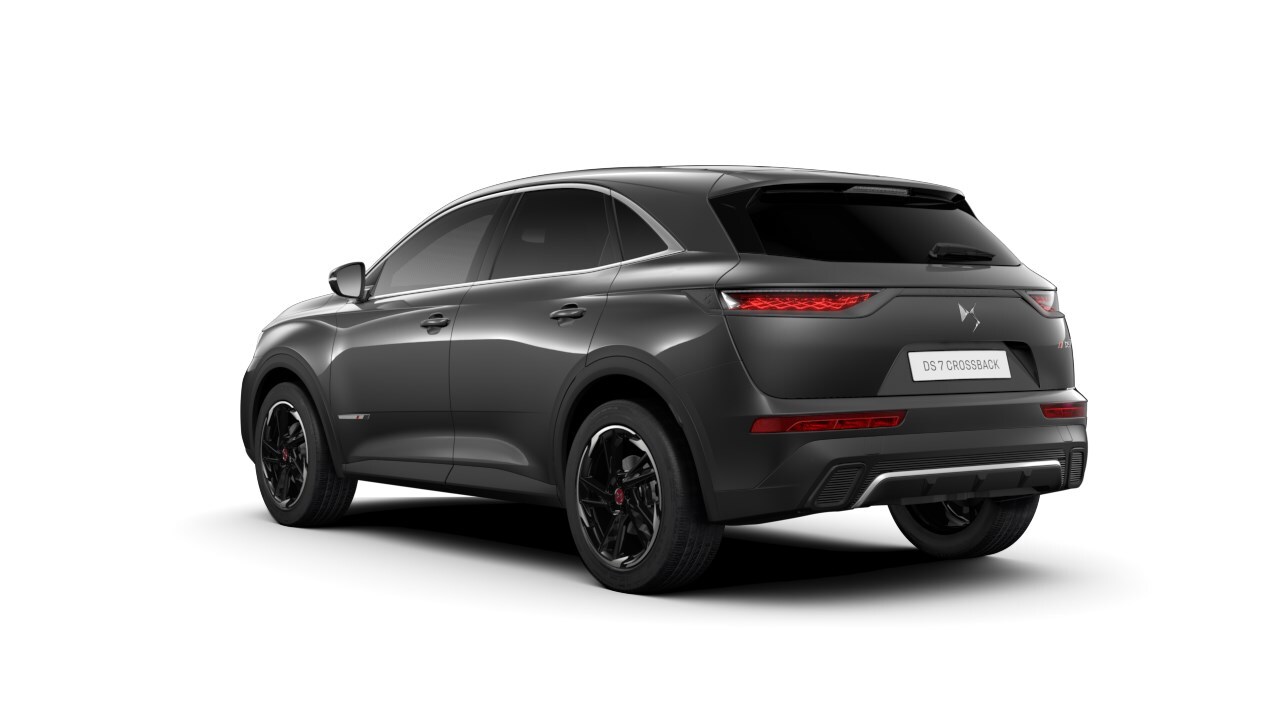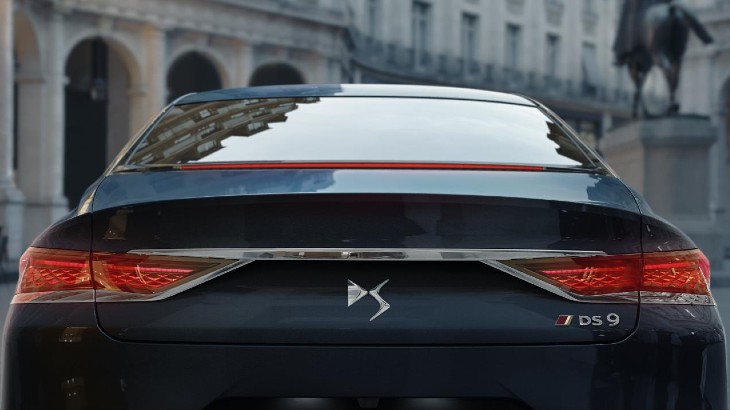
With DS Automobiles making headlines recently by stating they would become a 100 percent electric brand from 2024 onwards, it’s been a rapid ascension for the brand since its launch in over a decade ago.
With their involvement in all-electric Formula E racing, the avant-garde premium brand is pre-empting wide-ranging changes in the car industry and using technology developments in that field to inform their public offering going forward.
Characterised by sponsorships of Sky Arts and the South Bank Awards, tie-ins with Paris Fashion Week, and the launch of a limited edition Givenchy DS 3, all have helped to emphasise the brand’s boutique Parisian chic appeal.
But how did we get here, and what DS car models are currently available?
A brief history of DS Automobiles
Citroen originally began the DS line as a sub-brand in 2009, with its aim to build on the legacy and heritage of the original Citroen DS and act as the French manufacturer’s premium offering.
The DS range got off to a great start with the launch of the Citroen DS3 in 2010, with this elegant supermini named 2010 Car of the Year by Top Gear Magazine and the second most efficient supermini by What Car?
The success of the DS3 led to the launch of the Citroen DS4, a hatchback, and the DS5 in quick succession, however neither model could replicate the supermini’s initial success.
In 2015, Groupe PSA, the parent company of Citroen, made the decision to spin DS out as its own luxury brand rather than a premium off-shoot of Citroen.
Carlos Tavares, former CEO of Groupe PSA, stated that DS would continue to use the same platforms and dealerships as Citroen but would distinguish itself by using “separate manufacturing and engineering standards”.
DS 3

Having launched the Citroen sub-brand in 2010, the DS 3 was chosen once again to be the launch car to mark DS out as its own standalone luxury brand.
Revealed in suitably French surroundings at Le Louvre in Paris in 2016, DS 3 featured new badging as well as a revised front and rear design. Trim level names were reintroduced as entry-level Chic, Elegance and range-topping Prestige.
A new range of engines were also introduced. These included a 1.2-litre three cylinder PureTech petrol, 1.6-litre THP turbocharged petrol engine with 165 bhp, and 1.6-litre BlueHDi turbo diesel engine. In addition, a new DS 3 Performance model was introduced with the engine uprated to 210 bhp, with a 0–62 time of 6.5 seconds.
Though it collected some awards, the new DS 3 struggled to replicate the success of its predecessor. With buyer trends changing as the crossover segment continually grew in popularity, it became clear that DS needed to go back to the drawing board and reinvent the model.
DS 3 Crossback
The DS 3 Crossback was revealed to the public in 2018, making its public debut at the Paris International Motor Show. A distinct departure from the previous generation supermini, it was the first model to be built on Groupe PSA’s ‘Common Modular Platform’ and was a small crossover built to rival the likes of the Audi Q2 and Volkswagen T-Roc.

Featuring the familiar DS grille and lights introduced on the larger DS7 (more on that in a bit), the Crossback also featured flush-fitting door handles as well as access to an app for locking and unlocking the car.
Three PureTech petrol engines were offered alongside a 1.5 litre diesel, but it was the introduction of an all-electric version, the E-Tense, which caught the eye. With a 50 kWh battery, it offered a potential range of up to 186 miles and was capable of being charged to 80% in 30 minutes with ultra-fast charging.
Launched in 2019, four models are offered in the UK range: entry-level Elegance, Prestige, Performance Line, and top-of-the-range Performance Line+:

Elegance

Prestige

Performance Line

Performance Line+
DS 7 Crossback
Prior to the DS 3 morphing into the Crossback, the DS 7 Crossback had been unveiled at the 2017 Geneva Motor Show.
This larger SUV aimed to combine the latest technological innovations with the brand’s Parisian savoir-faire, while also offering optimum driving comfort and performance. These steps were all taken to challenge premium models in the segment such as the BMW X3, Audi Q5 and Mercedes-Benz GLC.

Characterised by a large diamond-shaped grille, angular headlights, and wraparound rear taillights, the DS 7 looked and felt premium and individualistic in a segment which has always had a generic design template. This extended to the interior too, with exquisite attention to detail and elegance of premium materials perfectly encapsulating the refinement of the DS brand.
Four trims were available from launch with three petrol and two diesel powertrains offered across the range. A plug-in hybrid drivetrain was also offered comprising a 200hp petrol engine mated to two electric motors. This allowed for all-electric driving of up to 37 miles with recharging taking up to five hours.
Launched in early 2018 in the UK, it’s clear to see the role DS 7 has played in dictating the style and aims of the brand since. This extends to other DS car models such as the second-generation DS 3, all-new DS 9 saloon and the upcoming DS 4 hatchback.
But perhaps the DS 7’s biggest claim to fame is it was specially commissioned for the first journey of Emmanuel Macron when he was inaugurated as President of the French Republic in 2017.
Four models are offered in the UK range: entry-level Performance Line, Performance Line+, Rivoli, and top-of-the-range Opera:

Performance Line

Performance Line+
DS 9
In some respects you could view the DS 9 as a cursed car. Originally due to be revealed at the 2019 Shanghai Motor Show, this was postponed several times with the 2020 Geneva Motor Show finally settled on for its public debut… only for COVID-19 to scupper those plans.
Finally launched earlier this year, the DS 9 continues the trends kickstarted by the DS 7, with the executive saloon offering the same levels of elegance and personalisation while differentiating itself from the rest of the range by offering unparalleled space.

With a length of 4.93 metres, width of 1.93 metres and large 690mm diameter wheels, the DS 9 certainly has size on its side. With those stats in mind, you’ll want to be a rear passenger whenever you’re offered the opportunity as huge amounts of space are on offer and the rear seats can be heated, cooled or even offer a massage (a first in the class).
Only two engines are available currently: a 225hp petrol engine with automatic transmission and a consumption of 40mpg and a plug-in hybrid which mates the petrol engine with an electric motor. This offers an all-electric driving range of 25-31 miles and boosts consumption to a potential 188mpg.
This engine line-up will be extended at a later time to include two more E-Tense power units – the first with 250hp and two-wheel drive plus increased range capability, and the second a 360hp with intelligent four-wheel drive transmission.
Two models are currently offered in the UK range: Performance Line+, and Rivoli+

Performance Line+

Rivoli+
Coming Soon: The DS 4
At the tail-end of 2020, DS revealed plans for the launch of a new premium C-Segment vehicle: the DS 4:
With its shooting brake-esque looks bringing to mind the Porsche Panarama, the DS 4 aims to combine French luxury and augmented technology encapsulated in a daring new design.
Continuing the E-Tense offering found in the latest DS car models, the DS 4 will also offer a combined 225hp via a four-cylinder petrol engine paired to a 110hp electric motor to offer 30 miles of all-electric driving.
 Special Offers
Special Offers

 14th September 2021
14th September 2021  7 min read
7 min read 







